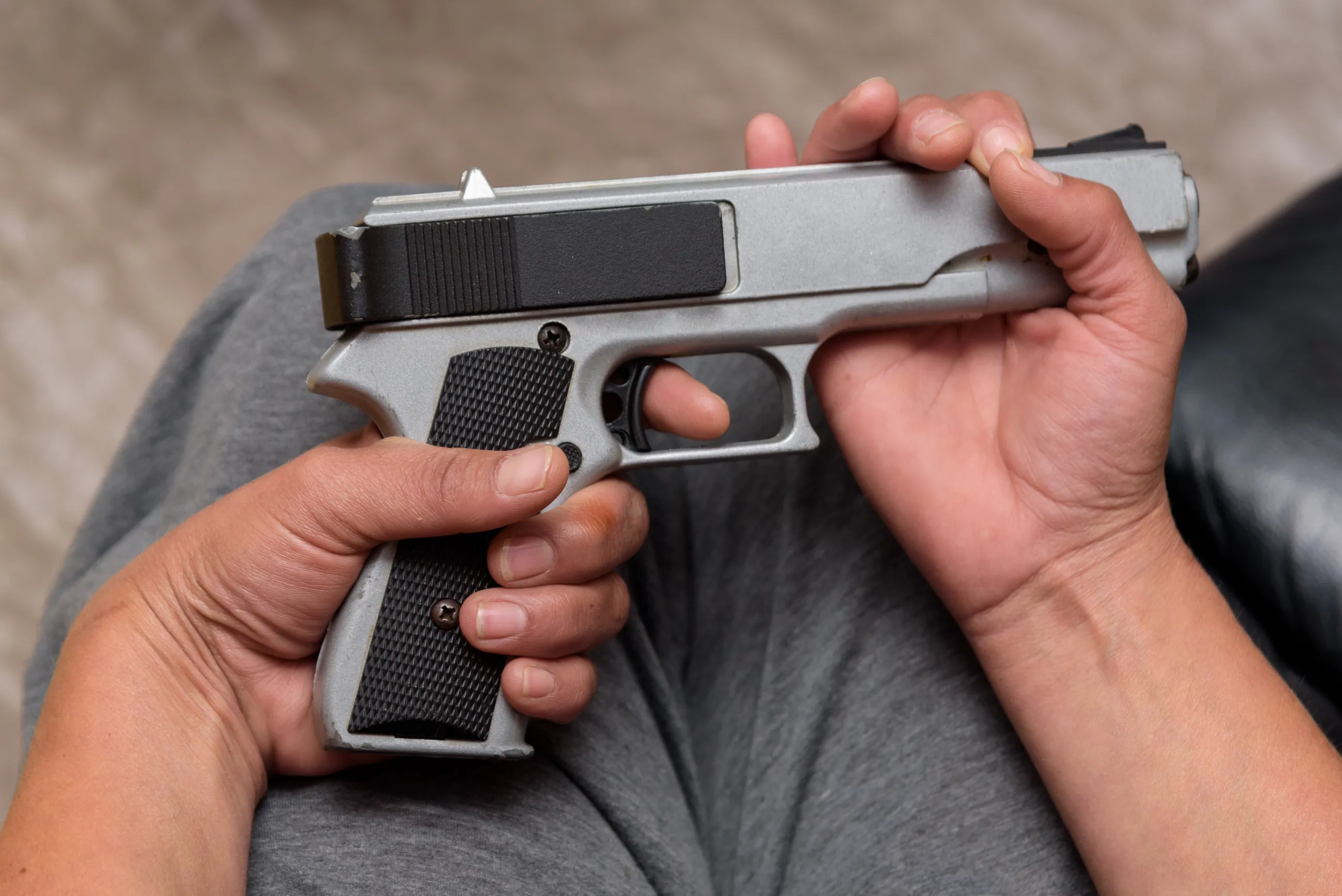July 15, 2024
Opinion: 'Red flag' laws help prevent firearm suicides in the U.S., but they curb gun rights. It's a balancing act of risks.

ERPOs can prevent firearm suicides, but striking a balance with gun rights is difficult to measure. (A.S. photo)
Access to a firearm can mean a person at the crossroads of ending their own life will succeed. Even though many other means of suicide exist, almost none are more predictably final. Psychiatry researcher Jeffrey W. Swanson looks at how extreme risk protection order laws prevent suicides and how they intersect with gun rights in his opinion for JAMA Network Open. Swanson first sees the topic through the lens of his 18-year-old cousin's suicide.
"The sound of my grandmother’s trembling voice lingers from that winter morning, almost 40 years ago now, when she called with awful news. My beautiful cousin Kristin had come home from college for the holidays and killed herself with a shotgun. . . . I was a new faculty member in a psychiatry department at the time, embarking on a career in which I would spend decades researching ways to prevent death and injury from guns.
"Aunt Helen asked me what could have saved their youngest child. I suggested Kristin had succumbed to a fatal illness; it was no one’s fault. . . .Today I would give a different answer. I would say Kristin died from a preventable injury with a firearm. I would add that a law prohibiting her access to a gun might have kept Kristin alive."
Extreme risk protection order laws, also known as red flag laws, "provide a civil court process designed to prevent firearm injuries by temporarily disarming individuals who pose an imminent risk of harm to themselves or others. An ERPO also prohibits a person from purchasing or possessing a firearm while the order is in effect, typically for up to a year," Swanson explains. "With the clarity of excruciating hindsight, it seems obvious that Kristin’s ability to acquire a firearm was a decisive factor in her death."
ERPOs have gained traction across the country as legislatures search for ways to reduce firearm deaths. At the same time, gun rights matter, so where is the balance? Swanson presents the paradox: "How do we know when someone poses enough danger to justify deploying police authority to remove their firearms? Risk means uncertainty, by definition, and risk assessment will always be an imperfect predictor of rare adverse events such as suicide; the significant risk factors all apply to many more people who will not die from suicide than those who will. Thus, for every hypothetical death averted by an ERPO, there will always be some ERPO respondents who would not actually have harmed themselves, or anyone else, had they been left (literally) to their own devices. We just do not know who they are in advance."
There are statistics to back up ERPO's effectiveness. "A widely cited statistic from our group’s research studies of suicide deaths among ERPO respondents in Connecticut and Indiana is that for every 10 to 20 ERPOs issued, 1 suicide was averted," Swanson adds. "In a nation where private gun ownership is commonplace, culturally entrenched, and constitutionally protected, feasible solutions to gun violence hang in the balance of risk and rights. . . . [Yet] in a country where more than 20, 000 people every year die of suicide with firearms, it is impossible to ignore that what is too late for Kristin could save many today."